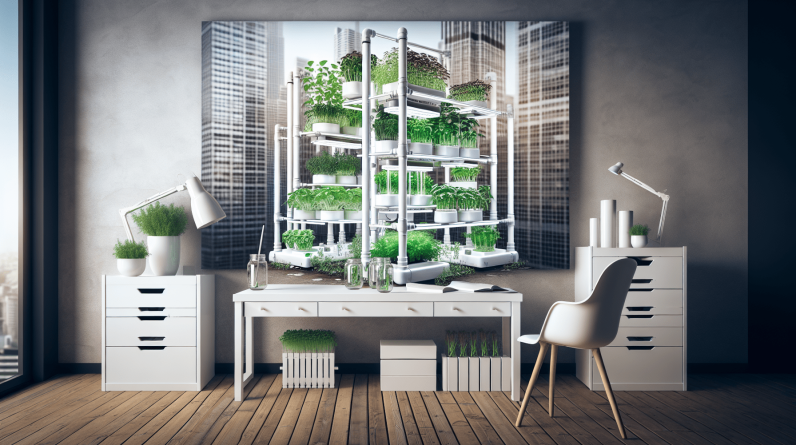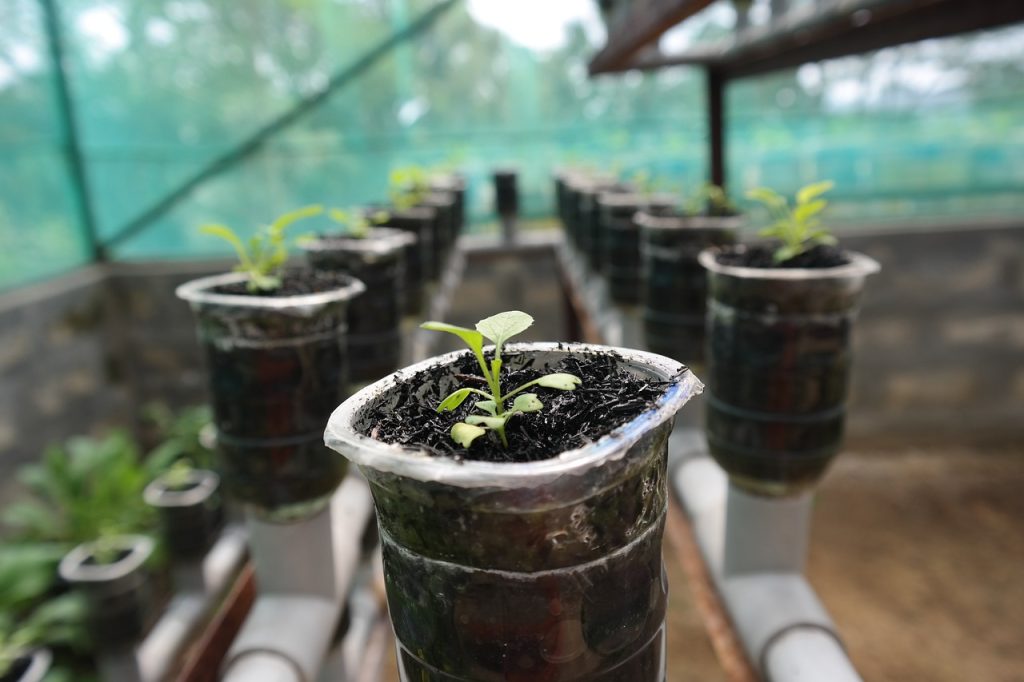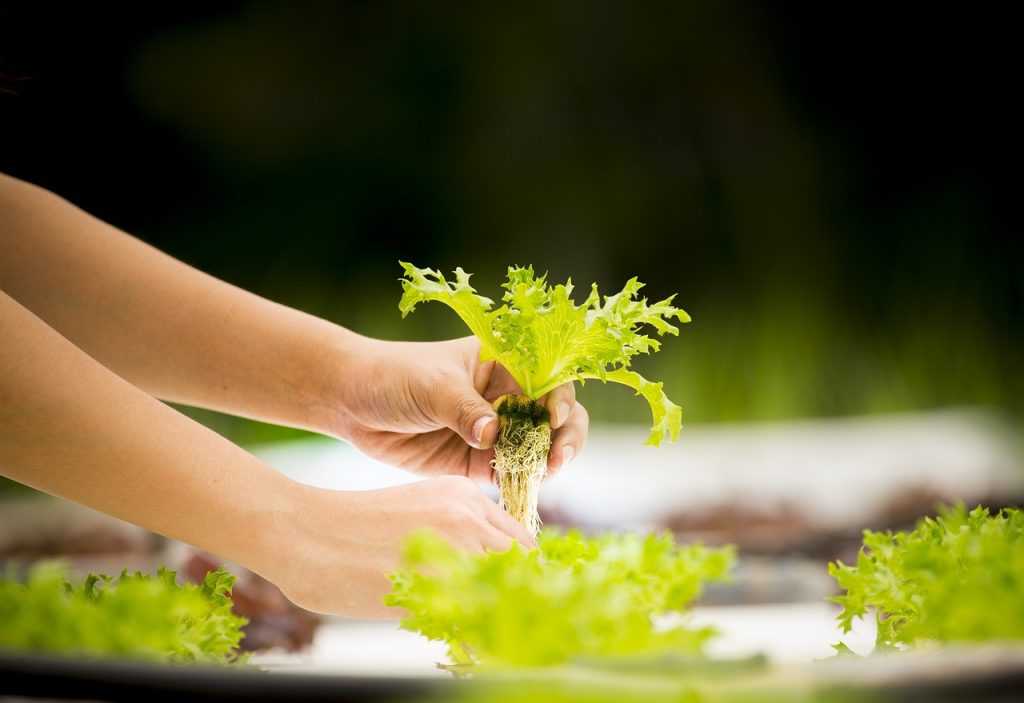
Introduction
So, you’re interested in trying out hydroponics at home? That’s fantastic! Hydroponics is a fun and rewarding way to grow plants without using soil. In this beginner’s guide, we will walk you through the basics of DIY hydroponics, making it easy for you to get started on your own indoor garden adventure.
What is Hydroponics?
Hydroponics is a method of growing plants without soil, using nutrient-rich water solutions instead. This allows plants to directly access the nutrients they need for optimal growth. It’s a clean and efficient way of gardening that can produce higher yields in a smaller space compared to traditional soil gardening.
Why Choose Hydroponics?
When deciding to start a hydroponic garden, it’s essential to understand the benefits that come with this innovative growing method. Hydroponic systems offer faster plant growth and increased yields due to the direct access plants have to essential nutrients. Additionally, hydroponics conserves water by utilizing up to 90% less than traditional soil gardening, and it enables year-round cultivation regardless of external weather conditions. By eliminating soil, hydroponic systems also reduce the risk of soil-borne diseases and pests, resulting in healthier plants that require fewer chemical inputs.
Types of Hydroponic Systems
There are several different types of hydroponic systems, each with its unique way of delivering nutrients to plants. Understanding the differences between these systems can help you choose the right setup for your needs.
Deep Water Culture (DWC)
DWC systems suspend plant roots directly in a nutrient-rich oxygenated water solution. This method is relatively simple and suitable for beginners as it requires minimal setup and maintenance. It’s an excellent choice for fast-growing plants like lettuce and herbs.
Nutrient Film Technique (NFT)
NFT systems involve a constant flow of nutrient solution over plant roots, creating a thin film of water that provides essential nutrients. This method is ideal for leafy greens and herbs that thrive in high oxygen environments.
Ebb and Flow (Flood and Drain)
Ebb and flow systems work by flooding the plant roots with a nutrient solution at regular intervals, then draining the excess water. This cycle ensures plants receive enough oxygen while delivering the necessary nutrients for growth. It’s a versatile system that can accommodate a variety of plant types.
Drip Systems
Drip systems deliver a nutrient solution directly to the plant roots through a network of tubes and emitters. This method allows for precise control over nutrient delivery and is suitable for larger plants such as tomatoes and peppers.
Aeroponics
Aeroponic systems mist plant roots with a nutrient solution, providing ample oxygen and nutrients for rapid growth. This method is highly efficient and can produce impressive yields in a compact space.

Setting Up Your DIY Hydroponic System
Now that you have a better understanding of the different types of hydroponic systems, it’s time to set up your DIY hydroponic system. Here’s a step-by-step guide to help you get started on your indoor gardening journey.
Materials Needed
Before you begin setting up your hydroponic system, gather all the necessary materials. Here’s a list of essential items you’ll need to build your DIY hydroponic system:
- A sturdy container or reservoir to hold the nutrient solution
- A grow tray or pots to hold the plants
- An air pump and air stone for oxygenation
- Growing medium (such as clay pebbles or rockwool cubes)
- Nutrient solution for plant growth
- pH testing kit to monitor water acidity
- Lighting system (LED or fluorescent) for plant growth
- Plants or seeds for cultivation
Setting Up the System
-
Prepare the Reservoir: Fill your container or reservoir with the nutrient solution according to the manufacturer’s instructions. Make sure to leave enough room at the top for plant roots to access oxygen.
-
Add Growing Medium: Place your chosen growing medium (such as clay pebbles) in the grow tray or pots. This will support the plants and help maintain moisture levels around the roots.
-
Plant the Seeds: Carefully plant your seeds or seedlings in the growing medium, ensuring they have enough space to grow. Be gentle with the roots to avoid damaging them.
-
Set Up Oxygenation: Attach the air stone to the air pump and place it in the nutrient solution. This will help oxygenate the water, ensuring that plant roots receive an adequate oxygen supply.
-
Adjust pH Levels: Use the pH testing kit to monitor and adjust the acidity levels of the nutrient solution. Most plants prefer a slightly acidic pH level of around 5.5 to 6.5.
-
Provide Adequate Light: Position your lighting system above the plants at an appropriate distance. Adjust the light intensity and duration based on the type of plants you’re growing to promote healthy growth.
-
Monitor and Maintain: Regularly check the nutrient solution levels, pH, and lighting conditions to ensure your plants are thriving. Make any necessary adjustments to optimize plant growth.
Plant Care in Hydroponic Systems
Once you’ve set up your DIY hydroponic system, it’s essential to provide proper care for your plants to ensure they grow healthy and strong. Here are some tips on how to maintain your hydroponic garden:
Nutrient Solution Management
Regularly monitor the nutrient solution levels in your reservoir to ensure plants have an adequate supply of essential nutrients. It’s crucial to maintain the correct nutrient balance to support healthy plant growth. Be sure to follow the manufacturer’s instructions for mixing and changing the nutrient solution as needed.
pH Level Monitoring
Check the pH levels of your nutrient solution regularly to ensure they remain within the optimal range for plant growth. Fluctuations in pH can impact nutrient uptake and plant health, so it’s essential to adjust the acidity levels as needed. Consider investing in a reliable pH testing kit for accurate measurements.
Lighting Requirements
Provide adequate light for your plants to support photosynthesis and growth. Adjust the lighting intensity and duration based on the specific needs of the plants you’re growing. Most plants require around 12-16 hours of light per day, so make sure to maintain a consistent lighting schedule for optimal growth.
Air Circulation
Proper air circulation is essential for healthy plant growth in hydroponic systems. Ensure that your growing area has adequate ventilation to prevent the buildup of humidity and mold. Consider using fans or ventilation systems to promote air circulation and prevent stagnant air around your plants.
Pest and Disease Control
Keep an eye out for signs of pests or diseases in your hydroponic garden, as they can quickly spread and impact plant health. Regularly inspect your plants for any unusual symptoms and take prompt action to address any issues. Consider using natural pest control methods or organic pesticides to protect your plants without harmful chemicals.

Troubleshooting Common Issues in Hydroponic Systems
Despite your best efforts, you may encounter some common problems while growing plants in a hydroponic system. Here are some tips on how to troubleshoot and resolve these issues to ensure your plants thrive:
Nutrient Deficiencies
If you notice signs of nutrient deficiencies in your plants, such as yellowing leaves or stunted growth, it may be due to an imbalance in the nutrient solution. Check the pH levels and nutrient concentrations in the reservoir and adjust them accordingly to provide plants with the necessary nutrients.
Algae Growth
Algae growth in the nutrient solution or growing medium can block oxygen and nutrients from reaching plant roots, affecting plant health. To prevent algae growth, ensure your system is adequately shaded from direct sunlight and regularly clean and disinfect your reservoir and components.
Root Rot
Root rot is a common issue in hydroponic systems caused by overwatering or poor oxygenation of the root zone. If you notice slimy or mushy roots, it’s essential to address the root rot immediately by adjusting watering schedules, improving air circulation, and ensuring proper oxygen levels for plant roots.
Temperature Fluctuations
Temperature fluctuations can affect plant growth and nutrient uptake in hydroponic systems. Ensure that your growing area maintains a consistent temperature range suitable for plant growth. Consider using a thermometer to monitor temperature levels and make adjustments as needed to prevent stress on your plants.
Harvesting and Enjoying Your Hydroponic Produce
After all your hard work and dedication to growing plants in your DIY hydroponic system, it’s time to reap the rewards of your indoor garden. Here are some tips on how to harvest and enjoy the fresh produce from your hydroponic garden:
Harvesting Techniques
When harvesting your hydroponic produce, use clean and sharp scissors to avoid damaging the plants. Cut the leaves or fruit at the base of the stem to promote regrowth. Harvest leafy greens and herbs regularly to encourage continuous growth throughout the growing season.
Storage and Preservation
After harvesting, store your hydroponic produce properly to maintain freshness and flavor. Leafy greens can be stored in the refrigerator for a few days, while herbs can be dried or frozen for later use. Consider preserving excess produce by freezing, canning, or pickling to enjoy your homegrown bounty year-round.
Culinary Inspiration
Get creative in the kitchen and explore new recipes using your fresh hydroponic produce. Incorporate leafy greens and herbs into salads, stir-fries, smoothies, and more to add fresh flavors and nutrients to your meals. Experiment with different flavor combinations and cooking techniques to make the most of your homegrown ingredients.

Conclusion
Congratulations on completing this beginner’s guide to DIY hydroponics! You now have the knowledge and tools to start your own indoor garden and grow fresh, nutritious produce year-round. Remember to start small, experiment with different plants and growing techniques, and enjoy the process of cultivating your hydroponic garden. Happy gardening!










